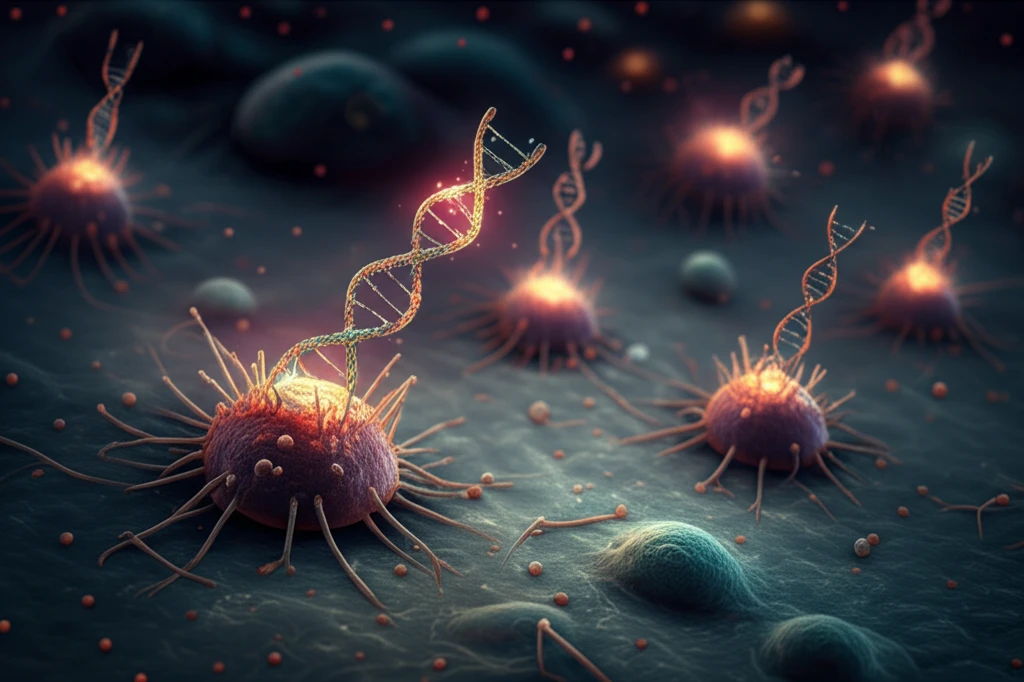
TNBC Breakthrough: How Aptamers Are Revolutionizing Imaging and Therapy
"Unlocking New Modalities in Triple-Negative Breast Cancer Treatment"
Triple-negative breast cancer (TNBC), representing 15% to 20% of all breast cancer cases, presents a formidable challenge in oncology. Unlike other breast cancers, TNBC lacks the expression of estrogen receptor (ER), progesterone receptor (PR), and human epidermal growth factor receptor 2 (HER2), which limits the effectiveness of traditional targeted therapies. This absence of specific molecular targets makes TNBC particularly aggressive and difficult to treat, often affecting younger patients and exhibiting a higher propensity for recurrence.
The landscape of TNBC treatment is primarily confined to conventional cytotoxic chemotherapy, which, while effective in some cases, is associated with significant toxicity and the eventual development of resistance. The pressing need for more precise and less harmful treatments has spurred researchers to explore innovative approaches, with a focus on identifying new biomarkers that can improve early detection and enable personalized treatment strategies. One such promising avenue is the use of oligonucleotide aptamers, which have the potential to overcome the limitations of current imaging and therapy modalities.
Aptamers, short single-stranded DNA or RNA molecules, are engineered to bind to specific target molecules with high affinity and specificity, much like antibodies. However, aptamers offer several advantages over antibodies, including their smaller size, ease of synthesis, and ability to be modified for various applications. These unique properties make aptamers ideal candidates for targeted imaging and drug delivery in TNBC, where the heterogeneity of the disease necessitates precise and adaptable therapeutic strategies.
Aptamers: The Key to Precision in TNBC Treatment

The Systematic Evolution of Ligands by EXponential enrichment (SELEX) technique has emerged as a powerful tool for identifying aptamers that can selectively bind to biomarkers on TNBC cells. This process involves iterative cycles of incubating a library of oligonucleotides with the target cells, partitioning the bound sequences, and amplifying them. Through repeated rounds of selection, aptamers with high affinity and specificity for the target are identified, offering a unique approach to targetable biomarkers.
- Aptamers can distinguish between subtle differences in cell surface protein signatures.
- Aptamers are effective for cell-type targeting and discrimination.
- Cell-SELEX allows selection for cell-internalizing aptamers.
- Aptamers enable targeted delivery of therapeutic agents in cancer cell lines.
The Future of Aptamers in TNBC Therapy
As we move into an era of precision medicine, aptamers hold tremendous potential as a therapeutic strategy in TNBC. While the application of aptamers as anticancer drugs is still limited, ongoing research efforts are focused on generating aptamers that specifically target disease-related proteins and developing them as targeted imaging agents, therapeutics, and delivery systems. The future of TNBC management may very well depend on the rational design of aptamer-based strategies, offering hope for more effective and personalized treatments.
